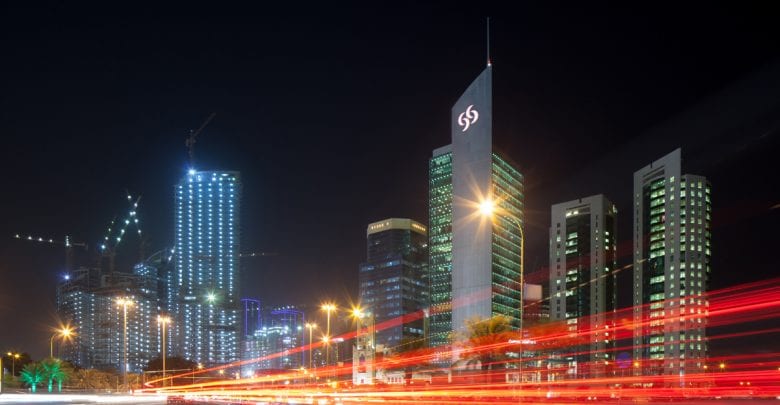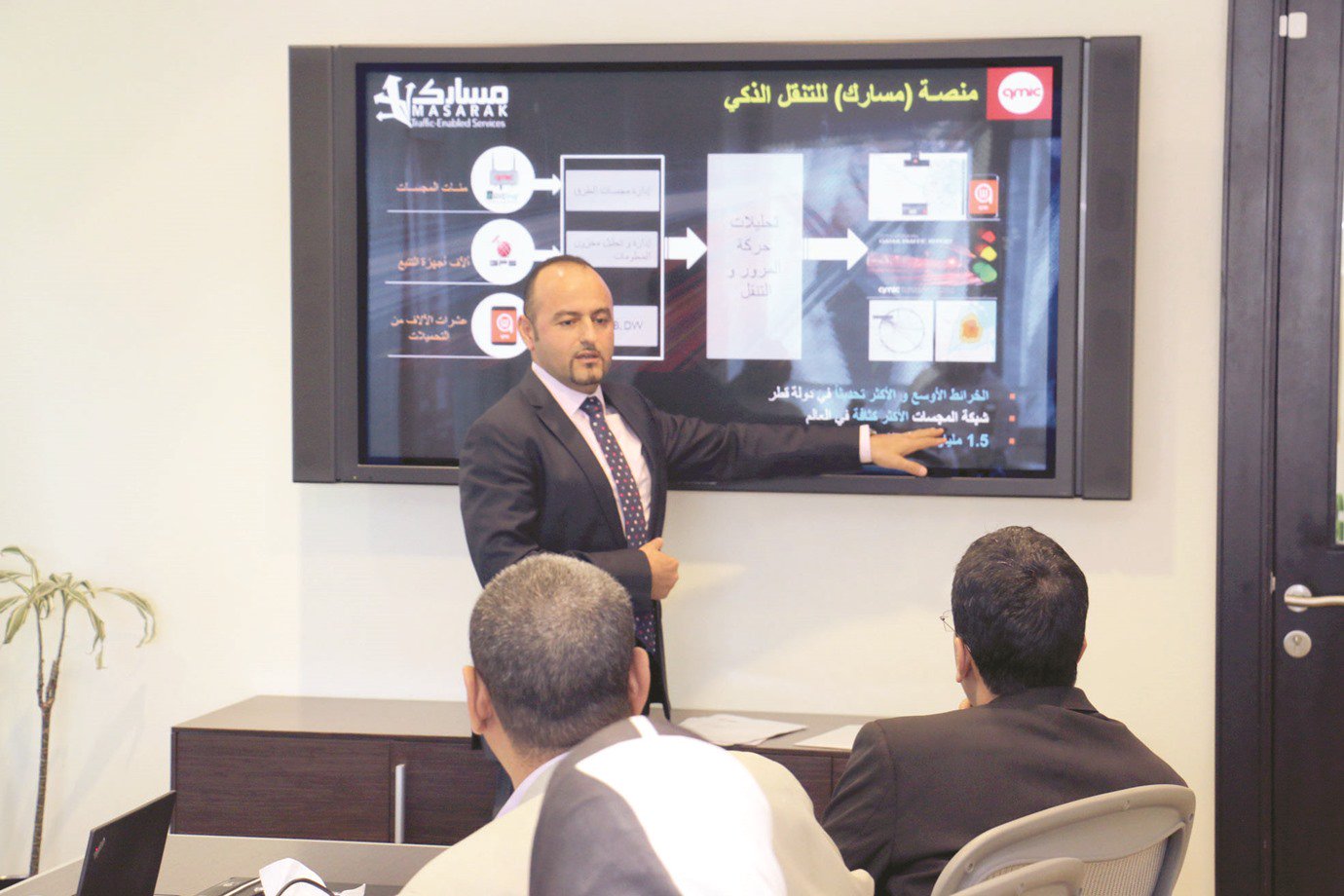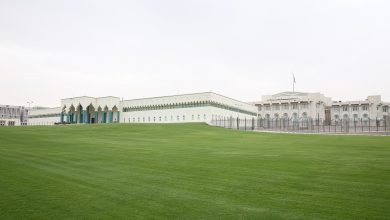
Time spent in traffic jams falls by 10%: Qmic report
تقرير الحالة المرورية: 10% انخفاضاً في عدد الساعات الإضافية لمستخدمي الطرق
The average number of hours spent by commuters in traffic jams in 2018 has fallen by 10% compared to 2016, according to a report released by Qatar Mobility Innovations Centre (Qmic) Monday.
Over 1.5bn records of data, coming from major road segments in Qatar, were collected by Qmic’s Masarak platform to prepare the Qatar Traffic Report (QTR) for 2018.
The average number of hours spent due to congestion was 98 per commuter in 2018, 10% less than the 109 in 2016. This indicates that road projects completed by Ashghal in 2018 had a positive impact on traffic flow.
QTR used the concept of Masarak Congestion Index (indicates average reduction in speed due to congestion) and the Travel Time Index (indicates the increase in travel time due to congestion) to assess the level of road congestion. In addition, using publicly available statistics about the labour force in Qatar together with Qmic’s mobility and congestion data, Qmic has built a model to quantify the economic impact of traffic congestion in Qatar.
Another finding of the report is that the economic cost (lost productivity) of congestion in 2018 is estimated to be between QR5.5bn and 6.9bn equivalent to the levels forecast for previous years. This translates to a loss of about 0.9-1.1% of the GDP in 2018. This is equivalent to the level economic losses observed in other countries.
The report finds that February, March, and November 2018 were the most congested months in the year with a congestion index of 28.8%. The highest congestion period during the work days is the evening peak (around 6-7pm) when the average congestion index is 33.8%. In the morning peak hours of work days, Monday had the highest congestion index of 33% and Thursdays had the lowest congestion index of 31%.
This year’s edition of the report takes a detailed look at the traffic status in Qatar. It provides unique insights about traffic congestion and movement in Qatar throughout the year, across major road segments and during different periods of the day.
Dr Adnan Abu-Dayya, executive director (CEO) of QMIC, said: “Over the years, we spent significant effort to build a comprehensive data collection network and the associated data intelligence that allowed us to build a valuable data bank about traffic and mobility behaviour in Qatar. We are happy to use this strategic platform to support decision makers in Qatar through the Qatar. In the next few months, we look forward to use our data bank and intelligence to shed insights about driving behaviour and road safety issues on Qatar’s roads.”
QTR is considered the only report of its kind to analyse data acquired from multiple sources and benchmarked against an existing and rich bank of information accumulated over the years. It can serve as an important tool for stakeholders in the fields of transportation, road safety, smart cities and urban planning, as it provides many useful insights into the state of traffic in Qatar.
QTR is one of the key outputs of the Masarak System which was fully developed and deployed by Qmic. Masarak represents a comprehensive platform and integrated suite of services serving the areas of Intelligent Transport, Road Safety, and Smart Logistics/Telematics.
باستخدام نظام مراقبة وتحليل الحركة المرورية المتطور (مسارك)، وباستغلال البنك الفريد والغني من بيانات المرور في قطر، أطلق مركز قطر للابتكارات التكنولوجية (كيومك) تقريره السنوي الثالث لحركة المرور في قطر لعام 2018، في مؤتمر صحافي أُقيم أمس بواحة قطر للعلوم والتكنولوجيا. وتقوم نسخة هذا العام من التقرير بإلقاء نظرة مفصّلة على حالة المرور في قطر.
كما تقوم بتقديم رؤى فريدة حول الازدحام المروري وحركة السير في قطر على مدار العام، عبر الشوارع والطرق الرئيسية وخلال فترات مختلفة من اليوم. كما يلقي التقرير نظرة على نتائج السنوات السابقة، ويقدّم مقارنات لتتبّع وكشف أهم التغييرات مع مرور الأعوام.
وقال الدكتور عدنان أبودية، المدير التنفيذي لـ «كيومك»: «لقد بذلنا جهوداً كبيرة على مدى السنوات الماضية في بناء شبكة شاملة وذكية لجمع البيانات؛ مما سمح لنا بإنشاء بنك معلوماتي قيّم حول سلوكيات حركة المرور والتنقل في قطر. ويسعدنا استخدام هذه المنصة الاستراتيجية لدعم صنّاع القرار في قطر من خلال هذا التقرير المروري السنوي وغيره من تطبيقات وخدمات النقل الذكي، والتي نقوم بتوفيرها للمؤسسات الوطنية ذات المصلحة والعملاء الآخرين. نحن نتطلع إلى استخدام بنك المعلومات الذكي الخاص بنا في الأشهر القليلة المقبلة لإلقاء نظرة شاملة حول سلوكيات القيادة وقضايا السلامة على الطرق في قطر. ومن هذا المنطلق، نود أن نثمّن دعم شركائنا الاستراتيجيين، وخاصة هيئة الأشغال العامة ووزارة الداخلية ووزارة البلدية والبيئة». ويأخذ هذا التقرير بعين الاعتبار عدداً من المقاييس الرئيسية المتفق عليها عالمياً لاستنتاج درجة وزمن ومكان الازدحامات المرورية في قطر.
ومن أهم السبل المنهجية المتبعة في هذا التقرير، استخدام مؤشر «مسارك» للازدحام المروري (يشير إلى انخفاض متوسط السرعة بسبب الازدحام المروري)، ومؤشر زمن الرحلة (يشير إلى زيادة وقت الرحلة بسبب الازدحام المروري)؛ لتقييم مستوى الازدحام على الطرق.
بالإضافة إلى ذلك، يرتكز التقرير على الإحصاءات المتاحة للعامة حول القوى العاملة في قطر، إلى جانب بيانات التنقل والازدحام متعددة المصادر التي يقوم «كيومك» بجمعها، كما قام «كيومك» بتصميم نموذج لتقدير التأثير الاقتصادي للازدحام المروري في قطر وتأثيره على الناتج المحلي الإجمالي.
بناء على تحليل أكثر من 1.5 مليار من البيانات المتعلقة بالسرعة المتوافرة في الطرق الرئيسية والموجودة في بنك معلومات «مسارك»، كشف تقرير المرور المفصّل لهذا العام عدداً من النتائج الرئيسية بخصوص التنقل على الطرق في قطر، منها:
? يبلغ متوسط عدد الساعات الإضافية التي يقضيها مستخدمو الطرق بسبب الازدحام 98 ساعة لكل مستخدم في عام 2018 (هذا أقل بنسبة 10% من 109 ساعات في عام 2016).
ويدل هذا على أن مشاريع الطرق التي أنجزتها «أشغال» في 2018 كان لها تأثير إيجابي على حركة المرور. ومن المتوقع أن يستمر التحسن في حركة المرور عند اكتمال مشاريع الطرق الرئيسية التي لا تزال قيد الإنشاء في عام 2019 وعند إطلاق مترو الدوحة خلال العام أو العامين المقبلين.
? تُقدّر التكلفة الاقتصادية (على أساس الإنتاجية المفقودة) للازدحام في عام 2018 بنحو 5.5 إلى 6.9 مليار ريال (وهو رقم مشابه للسنوات الماضية)؛ مما يعادل ما تقديره 0.9 – 1.0% من الناتج المحلي الإجمالي. ويعادل هذا الرقم متوسط التكلفة الاقتصادية للازدحام المروري في دول أخرى.
? فبراير ومارس ونوفمبر هي أكثر الأشهر ازدحاماً في عام 2018، وبلغت قيمة مؤشر الازدحام المروري حوالي 28.8%.
? أعلى فترة ازدحام خلال أيام العمل هي الذروة المسائية (حوالي 6-7 مساء)، حيث يكون متوسط مؤشر الازدحام المروري 33.8%.
? في ساعات الذروة الصباحية خلال أيام العمل، كان الاثنين هو الأكثر ازدحاماً حيث بلغت قيمة مؤشر الازدحام المروري 33% تقريباً، وكان الخميس هو الأقل ازدحاماً حيث بلغت قيمة المؤشر 31% تقريباً.




